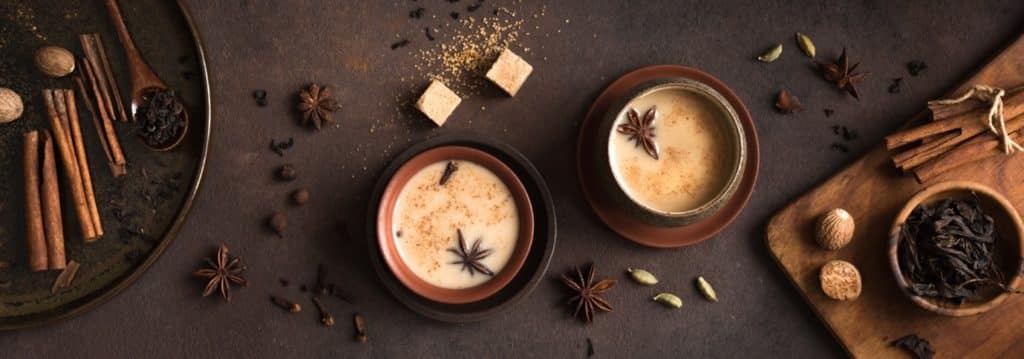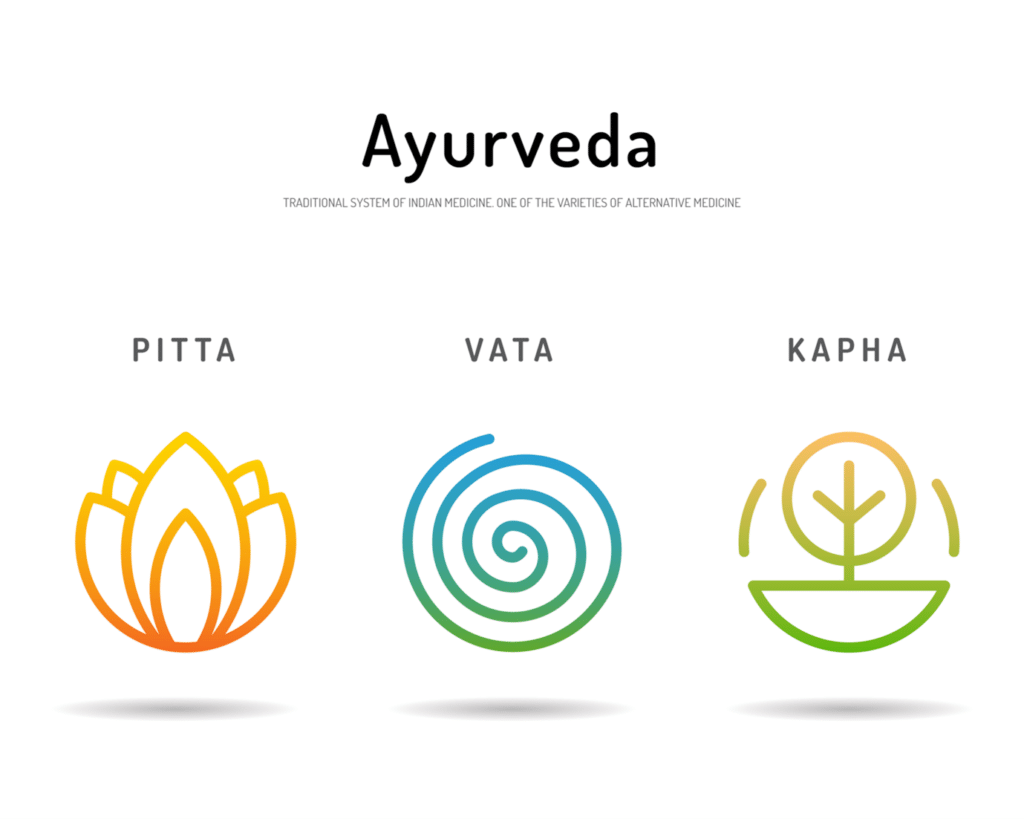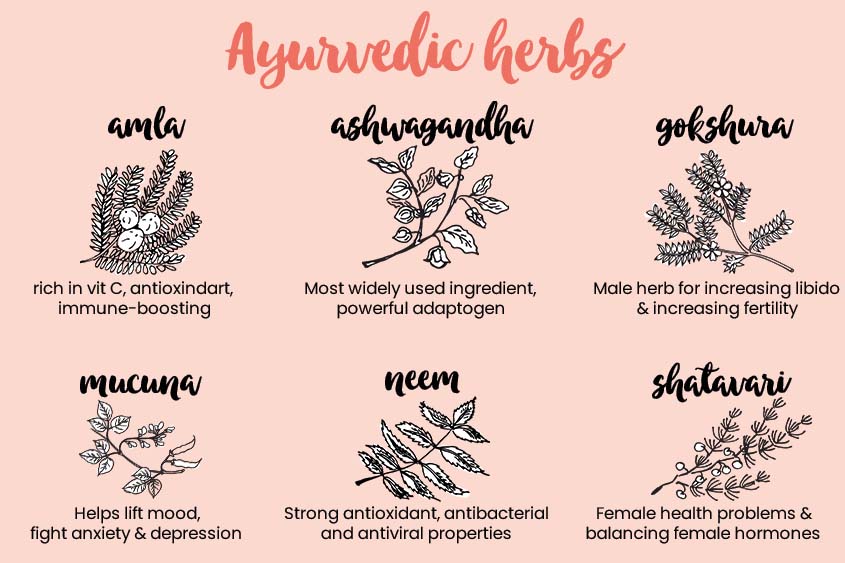
Overview of Ayurveda
Ancient Indian physicians were on the cusp of something great when Ayurvedic medicine came into use around 5000 years ago.
Ayurveda is a body of practices concerned with yoga, nutrition, herbs and lifestyle. It can be considered the foundation of natural medicines and is widely practiced and accepted in its country of origin India.
For a long time, everywhere except the Eastern world perceived it as alternative medicine. Today, with new research and a boost in spiritual practices, it continues to gain recognition from the Western scientific community.
Who Invented Ayurveda?
In cultural belief, Ayurveda was not something born out of the sole direction of men; it was a divine gift from Brahma. Brahma is the name given to a Hindu god celebrated as the Creator of the Universe. The commonly held belief is that Brahma transferred this knowledge of good health onto sages to the disciples and from the disciples onto people.
Ayurveda resulted from different ancient Hindu philosophies coming together and integrating certain principles as per research by Jaiswal and Williams 2017. Hindu teachings of Vaisheshika and Nyaya are what primarily built Ayurveda. These teachings, combined with the manifestation framework, Samkhya, guided the principles of this traditional medicine.
History and Origins
Ayurvedic Medicine has been around for thousands of years. This framework of medicinal practices came about as a guideline to treating disease. The methods are, for the majority, based on the human being and the human form.
According to professor V. Narayanaswamy of the College of Indian Medicine, the Ayurvedic principles remain the same irrespective of time passing. The disease and its appearance can evolve with the environment, but the human body retains its likeness throughout the ages. With this in mind, there is not much adjustment needed in the approach to the disease.
Evolution of Ayurveda
In ancient times several written texts recorded the appearance of disease, the signs, the symptoms, and the cure. Even today, practitioners and students still use this text to learn traditional medicine.
Ayurveda is a branch of medicine that developed through the writings of varying physicians. It is not one specific ancient text or link that forms the basis of Ayurveda, but instead several physicians work that covered various topics through the ages. At the time of its origins, did not confine itself to local knowledge and allowed for the incorporation of methods, treatments and medicines from other countries.
The patient’s health was prioritised over conflict, allowing health knowledge to “be taken even from an enemy for the good of the patient” according to Caraka as cited by Narayanaswamy. There were few limitations to expanding Ayurvedic medicine as practitioners sought to use an open-minded approach that only served the patient.

Books on Ayurveda
Two books, written at similar times, detail the main surgical and non-surgical methods of Ayurveda around 1000 BCE. The authors of which individually created ‘Charaka’ and ‘Susruta’, which became guides to Ayurvedic medicine.
These texts were challenged and adapted in successive years. Vagbhatt later merged both texts into the book ‘Astanga Hridaya’. Subsequently, 16 other books recorded novel applications and drugs while eliminating anything deemed irrelevant.
Why Ayurveda is Scientific
As with any science, the decisions to achieve good health in this school of medicine were made by observing, testing, and adjusting the ideas and theories for an improved result. Reverse pharmacology is the method used to observe the traditional usage of drugs and evaluate their effectiveness through clinical trials.
Interestingly, as early as 1500 BCE, the study of Ayurvedic medicine split into Atreya, The School of Physicians and Dhanwantari, the School of Surgeons. Surgery methods recorded contained information on prosthetic surgery, cosmetic surgery like rhinoplasty, how to perform a caesarean birth and quite surprisingly, brain surgery.
This information comes from the journal of Natural Product communications in the 2014 article called Modernization of Ayurveda: A Brief Overview of Indian Initiatives.
Classification and Efficacy
Ayurveda, classified as natural or alternative medicine, is becoming more accepted and valued in recent years. Currently, there is an increasing awareness of the side effects of conventional allopathic medicine.
Additionally, a somewhat affordable prices of Ayurveda remedies makes it more accessible and encourages usage. Cross-cultural understanding has also circulated the idea that plants are highly beneficial to health.
The WHO (World Health Organisation), as cited by authors of the Modernization of Ayurveda article, says that 3.5 billion people from developing countries turn to natural, plant medicines as the main health care.
Further, about half of all drugs in current clinical use are products based on plant and other natural ingredients.
How does Ayurveda Work?
Ayurvedic medicine aims to find the primary cause of the health problem and bring awareness to the self.
Practitioners of this set of Eastern traditional medicinal practices build their analysis on the principles of Doshas. Doshas are combinations of various defined qualities like heavy versus light, rough versus smooth, etcetera.
The three doshas are named Vata, Pitta and Kapha. Briefly, Vata, Pitta and Kapha are various combinations of the energies of space, fire, water, earth, and air. Each Dosha has two primary elements though it is composed of all five elements.
Vata is air and space, Pitta is fire and water, while Kapha is water and earth. Practitioners look at a person’s constitution which is a unique Ayurvedic identity composed of Vata, Pitta and Kapha energies. Constitutions are stagnant and specific to each person. As such, Ayurvedic medicine is not a copy and paste system, it’s quite the opposite. Treatment is individual and determined after an extensive analysis of the patient including daily habits.
Sanskrit has it that the word ‘Ayurveda’ translates to ‘science of life’. ‘Science of life’ is fitting as the goal of Ayurvedic practitioners is to achieve a balance between the body, mind, spirit and the environment. Patients may be advised to change their lifestyles to achieve balance, thereby reducing stress, symptoms and increasing health. Lifestyle changes may include a proper diet and exercise routine.

More about Vata, Pitta, and Kapha
According to the Ayurvedic Institute, Vata, Pitta and Kapha are different types of energy which everything is composed of. Energy is essential to the body’s function and permits movement to distribute nutrients throughout the body and perform cellular biological processes. Ayurveda medicine views Vata as movement, Pitta as metabolising or digestion and Kapha as structuring and lubricating.
A constitution is composed of all three, with one being dominant. Imbalanced doshas and toxins can be the root of disease. Balancing these three doshas so none are overpowering or deficient can improve health.
Ayurvedic medicine versus modern medicine
Ayurvedic practices use mostly plants in its purest form as opposed to modern medicine which extracts properties and even manufactures synthetic versions to add to medicines. These naturally occurring benefits aren’t duplicated through pharmaceuticals that don’t have the healthful combination of hundreds of natural phytochemicals.
As Ayurveda utilises herbs and fruit in their purest form, it can be considered as a safer alternative to allopathic medicines with less likelihood of damaging side effects.
Can this practice regrow hair?
Dermatologist, Dr Akanksha Sanghvi listed multiple natural herbal remedies to treat hair loss and promote hair growth. Ashwagandha, Brahmi and kumari (aloe vera) are among the Ayurvedic plants mentioned. Dr Sanghvi states that products that contain these ingredients may encourage hair growth.
Ayurvedic mixtures and medications as well as topical applications of oils could also help hair growth. Some oils that may help according to Ayurvedic doctor Zeel Ghandi is, palandu (onion), neem, liquorice, camphor and Brahmi. Additionally, all oils won’t work for all people as the correct oil is based on a person’s balance of the doshas.

Can Ayurveda Treat Dandruff?
Dandruff, a common condition that causes dry flakes to fall from the head like snow, can be treated with Ayurveda. Ayurvedic Doctor, Deepak Jaju believes many options exist to minimise and clear dandruff. Combinations like coconut oil and camphor or lemon and neem, with hot oil scalp massages all aid in clearing up and reducing dandruff.
Jaju mentions that these herbal remedies should be used often to see results. Two to three weeks of continuous usage seems to be the best time frame. As a bonus, they can promote health of the hair and make it soft, strong, and smooth.
Plants of Ayurveda
Many plants in Ayurvedic medicine are well-known and used in common-households. Turmeric does double duty as a herbal remedy and a spice that is equally renowned for its anti-inflammatory properties and its ability to enhance the flavour of food. This powerful spice has benefits that are too many to list though it has been used to treat skin cancer, urinary tract infections, abdominal and menstrual aches as well as increase appetite according to sources cited for Chapter 13 of Herbal Medicine: Biomolecular and Clinical Aspects, 2nd edition.
Another familiar spice is cinnamon which is frequently used in Garam masala as the foundation for curries or in Western treats like Melk tart or apple pie. In ancient India, health practices used it for nausea and vomiting, lowering blood sugar levels, and to aid in indigestion, according to Dr Sharma from the Central Council for Research in Ayurvedic Sciences. Note, cinnamon can trigger allergic reactions.
Other herbal remedies are ashwagandha, Boswellia, Triphala, Brahmi, cumin, liquorice root, cardamom, pineapple, garlic, amla, aloe, sandalwood, basil, peppermint, and shatavari. Altogether there are 7000 plants and 8000 remedies recorded and codified as part of Ayurveda health practices.

Ayurveda in Food
Many well-known Ayurvedic herbal medicines have frequent use in the kitchen. The Journal of Ethnic Foods in 2015 included an article that is titled Traditional and Ayurvedic Foods of Indian Origin. The authors believe that Ayurvedic herbs have such a presence in this cuisine that many traditional Indian foods can be considered ‘Ayurvedic foods’.
A lot of recipes from India aim to incorporate antioxidants, probiotics, and a range of other nutritional benefits. Diet is intrinsically linked back to Ayurveda as it views the body as a product of what people consume. The phrase ‘you are what you eat’ is treated as a philosophy.

Ayurveda in Modern Practices
In recent years, Ayurveda is getting more attention from the scientific community as it is found that multiple practices can be linked back to modern-day science.
One rather fascinating article, ‘Building bridges between Ayurveda and Modern Science’ was done by Sanjeev Rastogi for the International Journal of Ayurveda Research in 2010’. He found that the Ayurvedic practice of ‘Bhasma’ preparation was found to create nanoparticles. ‘Bhasma’ is the ash resulting from carefully burning varying minerals, metals, and herbs. Interestingly, the more the particles are burnt, the smaller the nanoparticle becomes.
Rastogi also mentioned a study exploring the medical applications of gold nanoparticles, here is an excerpt: “Another study found gold nano-particles (4 nm size) helped in increased apoptosis in B-Chronic Lymphocytic Leukemia. Incidentally, CLL is an otherwise incurable disease predominantly characterized by resistance to apoptosis.” In short, the gold nanoparticles were healing Leukaemia by helping to trigger the natural death and removal of the cancer cells, even though the disease is normally unaffected by this function.
What this means is that there is some scientific evidence and a future possibility that ‘Bhasma’ preparations could merge more with the medical sphere and thus give more credit to Ayurveda. With increasing experimentation, it is seen that Ayurveda does not have to exist in isolation from modern medicine but can be used in conjunction with it.
Where can you get Ayurvedic Treatment?
Ayurvedic Practitioners are common in India and there is a growing number of practitioners all over the world including South Africa. Professionals had to have gone through formal educational training to achieve the title of Ayurvedic Practitioner.
Training for Ayurveda
Outside of the medical world, signs are all around that Ayurveda is becoming a more accepted and recognised practice. Ayurveda is gaining popularity due in part to the yoga boom as well as increasing interest in spiritual practices and of course globalisation. Education in this ancient medicine is becoming widespread as schools are currently operating in many countries besides India including Japan, Nepal, The Netherlands, Italy, Australia, and parts of the USA according to The Association of Ayurvedic Professionals UK.
Additionally, there is the option of distance learning for those who can’t attend in-person classes. Multiple institutions, like the California College of Ayurveda, offer online courses for international students.
Ayurveda in South Africa
Unfortunately, education is not facilitated in South Africa and interested parties would either have to study overseas or take an online course.
SAHPRA, the South African Health Products Regulatory Authority, categorises Ayurveda herbal medicines under Complementary Medicines as per the 2013 amendments to Act 101 of 1965. Other medicines in this category are from aromatherapy, Traditional Chinese Medicine and Homeopathy.
Related Information: What is Rasashaastra?
Rasa shastra medicines come from Ayurveda. ‘Rasa dravyaas’ are substances that originate from animal products, minerals and metals. Ayurveda holds that any substance can be used so long as the physician is mindful and judges the ingredient accordingly.
Compared to animal and herbal based remedies, minerals must be more processed to be safe for consumption as well as effective in treating disease. These medicines can be somewhat controversial as even highly poisonous lead is processed into powder for its therapeutic properties.
Other metals used are gold, silver, copper, and iron. Bhasma preparation falls under Rasashaastra as well. The highly toxic mercury is also used in this area of Ayurveda, the idea is that mercury exhibits unique properties that can enhance the therapeutic value of other substances that it is combined with.
It is said that mercury was the inspiration for the Bhasma preparation as scientists of Ayurveda watched the fluidity of mercury and attributed its effectiveness as a treatment to this property. It should be noted that mercury goes through intensive processes to be deemed safer by Ayurvedic practitioners.

Ayurvedic Products Available in Store
Organic Choice stocks a range of natural medicines some of which stem from Ayurveda. There are ashwagandha products, turmeric and amla which are well known and sought after.
Organic Choice Ayurveda products are available in powder or capsule form, as an essential oil, or enrobed in a raw-honey-sweetened chocolate for a decadent, healthy snack.
The store stocks triphala powder and boswellia herbal extract among many other products essential for maintaining good health.
Ashwagandha, haritaki, amla, gokshura, shatavari, neem and mucuna each have their unique benefits:
This is a herb renowned for its adaptogenic properties, including stress-relieving, reproductive health and memory-enhancing, as well as enhancing the immune and nervous system.
It is useful for wound healing, as a laxative and to treat fungal infections as well as heart and skin diseases.
Often used in hair products, Amla is a great source of vitamin C that can work as an antibacterial, antidiabetic and antioxidant; it can also treat jaundice.
A product renowned for boosting male fertility and libido, that helps stimulate the immune system, reduce the formation of kidney stones, control muscle spasms, prevent liver damage, and can aid in stopping tumour growth.
This the traditional female herb for balancing hormones in women and alleviating menstrual cycle pain and spasms, as well as assisting with PCOS and menopausal symptoms. It is also useful for treating disorders of the nervous system, help heal ulcers and it may even suppress AIDS symptoms.
Neem has antioxidant capabilities, can help inhibit cancerous tumours forming, is an anti-inflammatory, antiviral, antibacterial, may help the metabolic system, can soften skin and detox the immune system.
A herb that is often recommended for anxiety & depression, and can be used to treat Parkinson’s disease. This plant poses anti-inflammatory and aphrodisiac properties and has the potential to help with treating cancer, preventing seizures and treating arthritis. Though there are a multitude of benefits for each herb, this is not a complete list and there are still many other functions.
Ayurveda is gaining recognition through globalisation, medical research, and an increase in educational opportunities surrounding this practice. Practitioners recognise the person as an individual and tailor-make their diagnoses and prescriptions. Ayurveda uses natural resources to balance a person to promote and maintain health.
Disclaimer:
Please note that everything described in this article is not medical advice and should not be taken as such. Seek professional advice from an Ayurvedic practitioner or consult your healthcare provider. Though Ayurveda products do not typically cause side effects, you should still exercise caution and discontinue usage of any product that causes discomfort. Some products could potentially trigger allergic reactions.
Organic Choice- 10/01/2022








